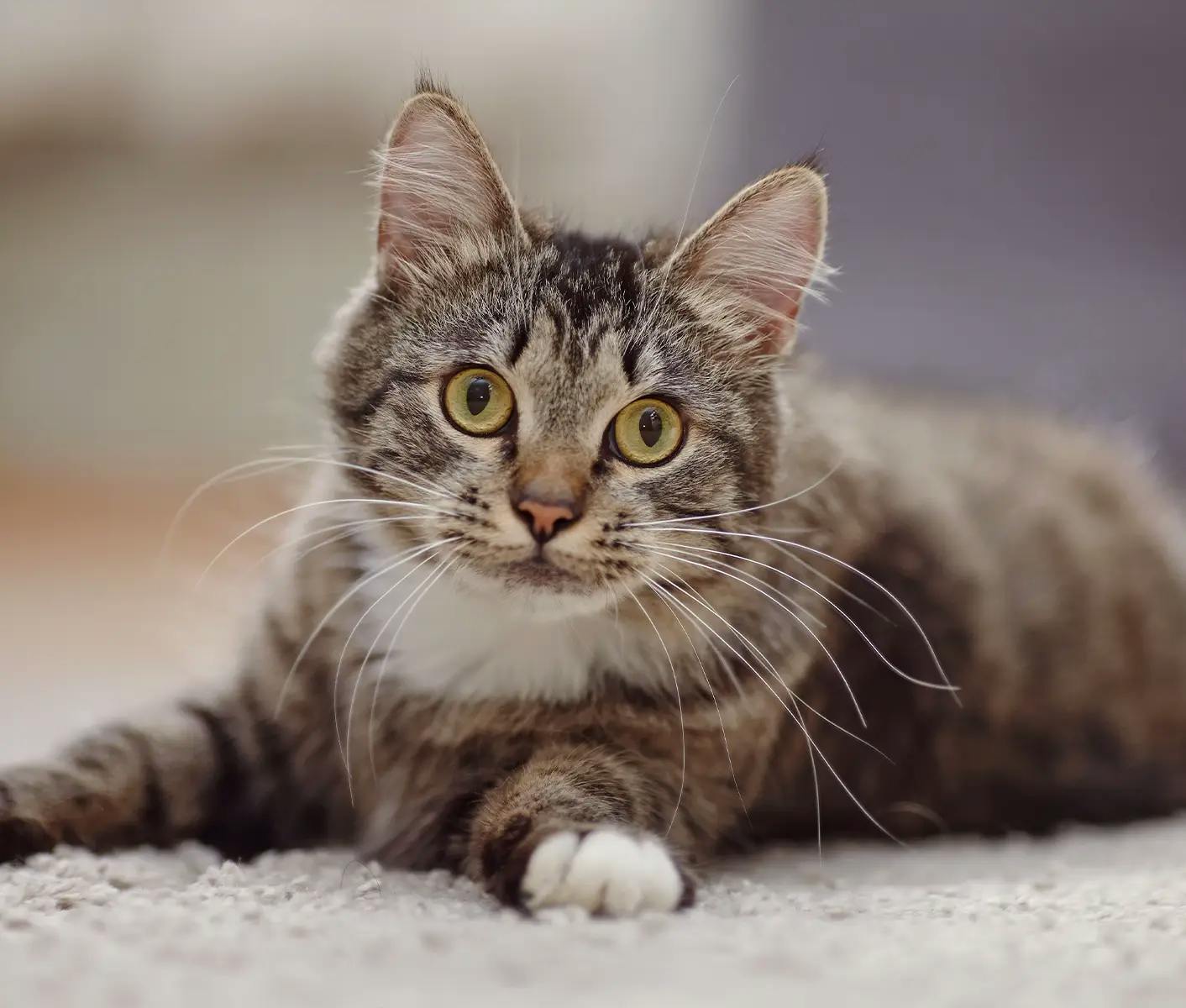How do you treat skin problems in cats? Cat skin issues are a common issue that cat owners deal with. Because symptoms of different skin conditions and diseases are often similar, it can be difficult to identify the source of the problem. Common skin disorders in cats are often caused by parasites, oily glands, fungal infections, stress and allergies.
Flea Allergy Dermatitis in Cats
Cat skin allergies caused by a severe reaction to a flea’s saliva, cat flea allergy dermatitis causes itchy pimple-like bumps, redness, hair loss, and scales. The best way to prevent this cat skin problem is to control fleas on your cat and in the environment with flea preventatives. Find the best flea preventative for your cat using Revival’s Flea & Tick Finder.

Food Allergy Dermatitis in Cats
Cats can be sensitive to certain ingredients in their food. If your cat has an allergic reaction to something he ate, it can result in severe itching over the head, neck and back, plus his eyelids may swell. Constant scratching of the skin may result in hair loss and oozing sores. Treatment includes finding the underlying cause of the allergic reaction and changing to a food with a different or hydrolyzed protein.
Environmental Allergies in Cats
Your cat may be allergic to something in the environment, such as pollen, grass or trees. Environmental allergies often cause severe itching and skin lesions as a result of chewing, licking and scratching the skin. Treatment includes topical anti-itch solutions and shampoos such as EquiShield® IR Shampoo or Spray. Try using a colloidal oatmeal shampoo such as EquiShield™ AO Shampoo or a hydrocortisone treatment.
Psychogenic Alopecia in Cats
Feline psychogenic alopecia, also known as over-grooming, results in the thinning of hair down the back or on the abdomen. It is caused when a cat is a compulsive self-groomer, often caused by stress. Treatment involves creating a calm environment to reduce stress in your cat’s life. Try using a calming aid, such as Comfort Zone Spray and Scratch Control.
Ringworm in Cats
Feline ringworm is a fungal infection that can be hard to treat on cats. It shows up as patchy hair loss that’s usually not itchy. Vet Basics Lime Sulfur Dip is an effective topical treatment for eliminating infection and reducing the shedding of spores that lead to environmental contamination. Treat new ringworm spots with a medicated spray and use Nu-Stock to help heal irritated skin.
Feline Acne
How do you treat cat acne? Commonly seen in cats two to four years of age, feline acne causes comedones (blackheads) to form on the cat’s chin and edges of the lips. This could be caused by hyperactive chin sebaceous glands, poor hygiene, stress, or a reaction to plastic food/water bowls. For mild case treatments, use an anti-seborrhea product like a medicated anti-itch shampoo and then treat with medicated wipes such as Banixx Pet Care Ear, Paw and Wound Wipes twice a day. Using stainless steel bowls washed daily with soap and water may help as well.
Stud Tail on Cats
Feline stud tail is a skin condition caused by a sebaceous gland near the tail. When the gland excretes excessive oil, the result is a greasy, bad-smelling brown substance at the top of the tail near the base. Although it often occurs in unneutered males, fixed males and females can get it too. Using an anti-seborrheic shampoo usually helps solve the issue. Groomer’s Goop Degreaser will also help remove the excess grease and oil from your cat’s skin.
Are Fatty Acids Good For Cats
Fatty acids for cats are often recommended to improve the skin and coat quality. Omega 3 is a natural fatty acid that decreases cat skin irritation and helps with itching. It has been effective in controlling the irritation of allergies, plus it helps to reduce flakiness, itchiness and shedding. Using a fatty acid supplement derived from fish oil, like Omegaderm-3 or salmon oil, can be very beneficial for your cat’s skin, coat, and overall wellness.
If you have more questions on how to treat skin problems in cats, call a Revival Animal Care Specialist at 800.786.4751
LEARN MORE:
Treating Skin Conditions in Dogs and Cats
What can I put on my dogs irritated skin? How can I soothe my cat's itchy skin? Choosing the right product to treat your pet's skin conditions can be tricky. Learn cat and dog skin care tips and what products can easily treat common skin conditions.
Environmental Allergies in Dogs and Cats
How do I know if my dog has an environmental allergy? Why are my dogs ears and eyes itchy? Environmental allergies are caused by irritating substances in a dog or cat's environment. Learn how to treat environmental allergies in dogs and cats and protect your pet's skin.
Skin Fold Pyoderma in Dogs and Cats
What is skin fold pyoderma? Skin fold pyoderma is a skin condition that affects dogs and cats that have a lot of wrinkles and facial folds. Learn the symptoms, treatment and prevention.
How to Keep Your Pet’s Skin and Coat Healthy
How can I improve my dog's hair coat? Does my cat need skin care? Skin problems are a common reason why people bring their pets to the vet. Keep your pet's skin and coat healthy by following these easy steps.
Written by: Marty Greer, DVM
Director of Veterinary Services
Marty Greer, Doctor of Veterinary Medicine, has 40+ years’ experience in veterinary medicine, with special interests in canine reproduction and pediatrics. She received her Doctor of Veterinary Medicine from Iowa State University in 1981. She’s served as Revival’s Director of Veterinary Services since 2019. In 2023, Dr. Greer was named the Westminster Kennel Club Veterinarian of the Year.

